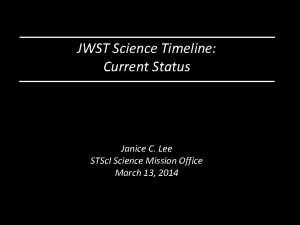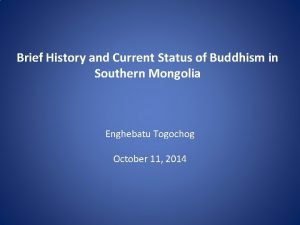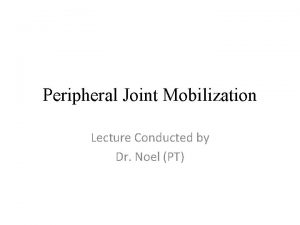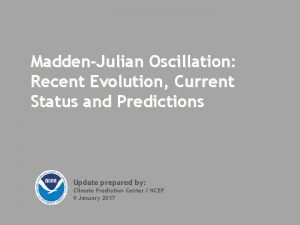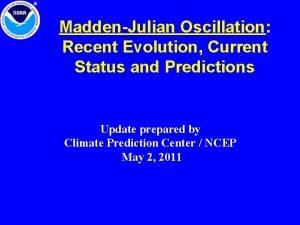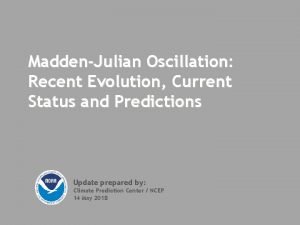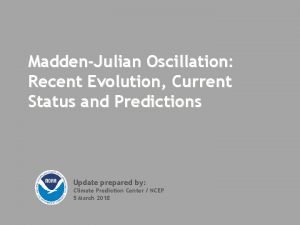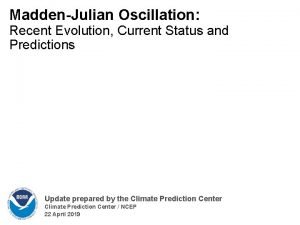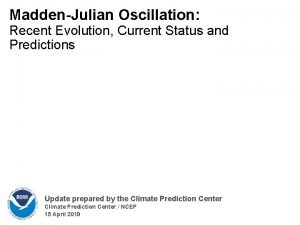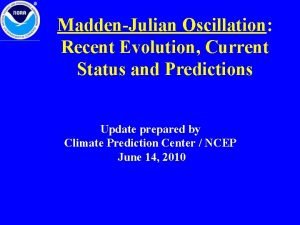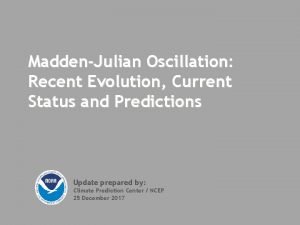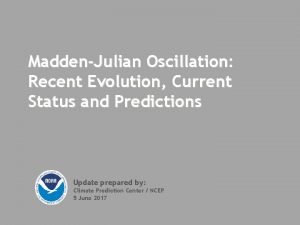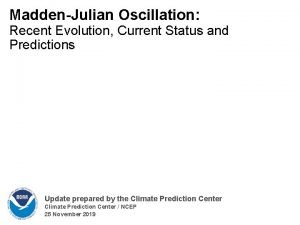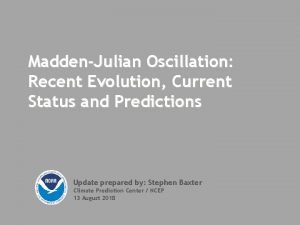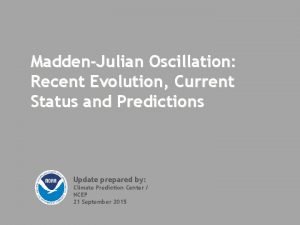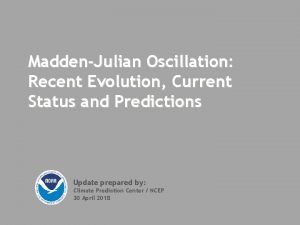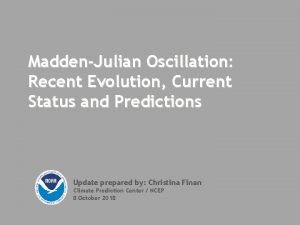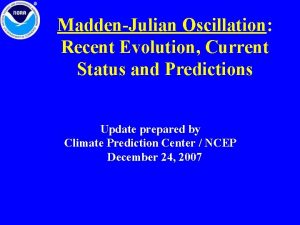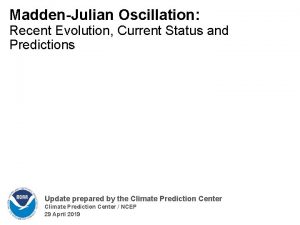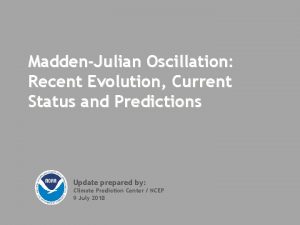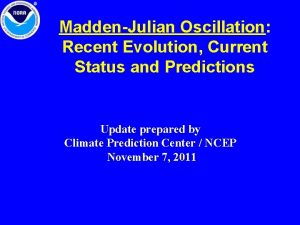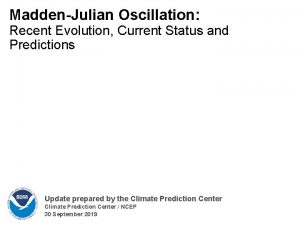MaddenJulian Oscillation Recent Evolution Current Status and Predictions





















- Slides: 21

Madden-Julian Oscillation: Recent Evolution, Current Status and Predictions Update prepared by: Kyle Mac. Ritchie Climate Prediction Center / NCEP 28 January 2019

Outline Overview Recent Evolution and Current Conditions MJO Index Information MJO Index Forecasts MJO Composites

Overview The convectively active phase of the MJO is over the West Pacific. Virtually every model suggests that the MJO will weaken during the next several days. The GEFS suggests that the MJO signal will become mostly stationary and remain in place during the next two weeks while the ECMWF model forecasts the MJO signal to propagate into Phase 7 before weakening during Week-2. There is significant constructive interference just west of the Date Line from the intersection of MJO, equatorial Rossby, and Kelvin wave activity. Additional potential impacts across the global tropics and a discussion for the U. S. are available at: http: //www. cpc. ncep. noaa. gov/products/precip/CWlink/ghazards/index. php

850 -h. Pa Vector Wind Anomalies (m s-1) Note that shading denotes the zonal wind anomaly Blue shades: Easterly anomalies Red shades: Westerly anomalies There are weak anomalous easterlies throughout the equatorial Pacific. Mid-latitude wave breaking occasionally reaches the tropics, which can incite and enhance equatorial waves.

850 -h. Pa Zonal Wind Anomalies (m s-1) Westerly anomalies (orange/red shading) represent anomalous west-to-east flow Easterly anomalies (blue shading) represent anomalous east-to-west flow From August through mid-September, a variety of tropical waves including Rossby waves and tropical cyclones, influenced the pattern. Another rapidly propagating intraseasonal feature during late September generated robust westerly wind anomalies across the Pacific. Since late September, anomalous westerlies increased in amplitude and duration over the equatorial Pacific, consistent with a gradual transition towards El Niño conditions. There have been at least two more MJO events since September. Equatorial Rossby wave activity has picked up since early December (see purple lines with positive slopes), occasionally amplifying the MJO’s convection.

OLR Anomalies – Past 30 days Drier-than-normal conditions, positive OLR anomalies (yellow/red shading) Wetter-than-normal conditions, negative OLR anomalies (blue shading) By early January, some of the convective activity associated with the MJO extended along the SPCZ into the southern mid-latitudes. In addition, suppressed convection over the Indian Ocean strengthened. During mid-January, enhanced convection across the Indian Ocean (West and South Pacific) was tied to the active phase of the MJO (Rossby wave activity). Convection persisted between New Guinea and the Date Line, consistent with the low frequency state.

Outgoing Longwave Radiation (OLR) Anomalies (2. 5ºS - 17. 5º S) Drier-than-normal conditions, positive OLR anomalies (yellow/red shading) Wetter-than-normal conditions, negative OLR anomalies (blue shading) Limited anomalous convection has been observed east of 140 W during the past several months, suggesting if El Niño does develop it may be of the Modoki variety. Since the end of September, the MJO signal has seen alternative active and inactive phases crossing the Indian Ocean through the Central Pacific and influencing the convection for these regions.

200 -h. Pa Velocity Potential Anomalies (5ºS - 5ºN) Positive anomalies (brown shading) indicate unfavorable conditions for precipitation Negative anomalies (green shading) indicate favorable conditions for precipitation The intraseasonal MJO activity that began in early September can also be seen in the upper-level velocity potential field. Equatorial Rossby wave activity, picked up in early December, is also noticeable in this field and likely contributed to the brief area of especially enhanced convection just west of the Date Line in late December.

IR Temperatures (K) / 200 -h. Pa Velocity Potential Anomalies THIS SLIDE NOT UPDATED Enhanced convection over the Maritime Continent serves to anchor this noisy Wave-1 pattern. Positive anomalies (brown contours) indicate unfavorable conditions for precipitation Negative anomalies (green contours) indicate favorable conditions for precipitation

200 -h. Pa Vector Wind Anomalies (m s-1) Note that shading denotes the zonal wind anomaly Blue shades: Easterly anomalies Red shades: Westerly anomalies Atmospheric mid-latitude wavebreaking can be seen in both maps over the West Coast of North America during the past two pentads. There is considerable midlatitude/tropical interaction over the eastern Pacific during the latest Pentad as wave activity in both hemispheres combine to form a region of strong anomalous westerlies just east of the Dateline. T C R D C C C

200 -h. Pa Zonal Wind Anomalies (m s-1) Westerly anomalies (orange/red shading) represent anomalous west-to-east flow Easterly anomalies (blue shading) represent anomalous east-to-west flow During August into September, the intraseasonal pattern weakened, with Rossby wave activity influencing the West Pacific. Since mid-September through mid-December, upper-level winds have been marked by pronounced intraseasonal activity, interrupted by Rossby waves. There was a trend towards anomalous easterlies over the eastern Pacific (inside the box) from mid. November through mid-December. MJO and mid-latitude wave activity have acted to reduce the anomalous easterlies in the east Pacific while synoptic-scale variability has picked up.

Weekly Heat Content Evolution in the Equatorial Pacific Oceanic Kelvin waves have alternating warm and cold phases. The warm phase is indicated by dashed lines. Downwelling and warming occur in the leading portion of a Kelvin wave, and upwelling and cooling occur in the trailing portion. Negative upper-ocean heat content anomalies decayed across the central and eastern Pacific during the first half of 2018 tied to multiple downwelling oceanic Kelvin waves. Positive anomalies have now been observed over most of the basin since April. The westerly wind burst east of New Guinea in September triggered another oceanic Kelvin wave and round of downwelling, helping to reinforce the warm water availability for a potential El Niño event. Heat content anomalies recently decreased in magnitude over much of the Pacific, with the warmest near-surface water focused just west of the Antimeridian. The strengthening meridional oceanic heat content gradient may be tied to the more robust appearance of low frequency convection in recent weeks over the West Pacific.

MJO Index -- Information The MJO index illustrated on the next several slides is the CPC version of the Wheeler and Hendon index (2004, hereafter WH 2004). Wheeler M. and H. Hendon, 2004: An All-Season Real-Time Multivariate MJO Index: Development of an Index for Monitoring and Prediction, Monthly Weather Review, 132, 1917 -1932. The methodology is very similar to that described in WH 2004 but does not include the linear removal of ENSO variability associated with a sea surface temperature index. The methodology is consistent with that outlined by the U. S. CLIVAR MJO Working Group. Gottschalck et al. 2010: A Framework for Assessing Operational Madden-Julian Oscillation Forecasts: A CLIVAR MJO Working Group Project, Bull. Amer. Met. Soc. , 91, 1247 -1258. The index is based on a combined Empirical Orthogonal Function (EOF) analysis using fields of near-equatorially-averaged 850 -h. Pa and 200 -h. Pa zonal wind and outgoing longwave radiation (OLR).

MJO Index – Recent Evolution The axes (RMM 1 and RMM 2) represent daily values of the principal components from the two leading modes The triangular areas indicate the location of the enhanced phase of the MJO Counter-clockwise motion is indicative of eastward propagation. Large dot most recent observation. Distance from the origin is proportional to MJO strength Line colors distinguish different months The MJO is in Phase 6, with active convection over the Western Pacific, just west of the Dateline.

MJO Index – Historical Daily Time Series Time series of daily MJO index amplitude for the last few years. Plot puts current MJO activity in recent historical context.

GFS Ensemble (GEFS) MJO Forecast RMM 1 and RMM 2 values for the most recent 40 days and forecasts from the GFS ensemble system (GEFS) for the next 15 days light gray shading: 90% of forecasts dark gray shading: 50% of forecasts The GEFS forecasts the MJO to stall over the Western Pacific during the next two weeks. Other models suggest a similar fate for the MJO, but many are forecasting the MJO signal to weaken more than the GEFS is. Yellow Lines – 20 Individual Members Green Line – Ensemble Mean

Ensemble GFS (GEFS) MJO Forecast Spatial map of OLR anomalies for the next 15 days The GEFS plot of MJO related OLR anomalies is unavailable at this time. The GFS shows a stalled OLR signal during the next two weeks. Figures below show MJO associated OLR anomalies only (reconstructed from RMM 1 and RMM 2) and do not include contributions from other modes (i. e. , ENSO, monsoons, etc. ) Time-longitude section of (7. 5°S-7. 5°N) OLR anomalies - last 180 days and for the next 15 days

Constructed Analog (CA) MJO Forecast Spatial map of OLR anomalies for the next 15 days Figures below show MJO associated OLR anomalies only (reconstructed from RMM 1 and RMM 2) and do not include contributions from other modes (i. e. , ENSO, monsoons, etc. ) Time-longitude section of (7. 5°S-7. 5°N) OLR anomalies - last 180 days and for the next 15 days The GEFS plot of MJO related OLR anomalies is unavailable at this time. The constructed analog also shows a fairly slow signal, similar to the GEFS.

MJO Composites – Global Tropics 850 -h. Pa Velocity Potential and Wind Anomalies (Nov - Mar) Precipitation Anomalies (Nov - Mar)

U. S. MJO Composites – Temperature Left hand side plots show temperature anomalies by MJO phase for MJO events that have occurred over the three month period in the historical record. Blue (orange) shades show negative (positive) anomalies respectively. Right hand side plots show a measure of significance for the left hand side anomalies. Purple shades indicate areas in which the anomalies are significant at the 95% or better confidence level. Zhou et al. (2011): A composite study of the MJO influence on the surface air temperature and precipitation over the Continental United States, Climate Dynamics , 1 -13, doi: 10. 1007/s 00382 -011 -1001 -9 http: //www. cpc. ncep. noaa. gov/products/precip/CWlink/MJO/mjo. shtml

U. S. MJO Composites – Precipitation Left hand side plots show precipitation anomalies by MJO phase for MJO events that have occurred over the three month period in the historical record. Brown (green) shades show negative (positive) anomalies respectively. Right hand side plots show a measure of significance for the left hand side anomalies. Purple shades indicate areas in which the anomalies are significant at the 95% or better confidence level. Zhou et al. (2011): A composite study of the MJO influence on the surface air temperature and precipitation over the Continental United States, Climate Dynamics , 1 -13, doi: 10. 1007/s 00382 -011 -1001 -9 http: //www. cpc. ncep. noaa. gov/products/precip/CWlink/MJO/mjo. shtml
 Line current and phase current
Line current and phase current Difference between phase voltage and line voltage
Difference between phase voltage and line voltage N=nc exp(-eg/2kt)
N=nc exp(-eg/2kt) Ac theory 3 lesson 4
Ac theory 3 lesson 4 Drift current
Drift current Intrinsic semiconductor
Intrinsic semiconductor Wye connection
Wye connection Infineon
Infineon Drift current and diffusion current in semiconductor
Drift current and diffusion current in semiconductor Size separation equipment
Size separation equipment In this figure
In this figure In alternators the welding current is produced on the ____.
In alternators the welding current is produced on the ____. Hazard based safety engineering
Hazard based safety engineering Non planar circuit
Non planar circuit Current program status register is
Current program status register is Jwst current status
Jwst current status Current status of buddhism
Current status of buddhism Periodic motion examples images
Periodic motion examples images Non-thrust oscillation techniques
Non-thrust oscillation techniques Passive angular stretching
Passive angular stretching Dynamics
Dynamics Grades of mobilization
Grades of mobilization















